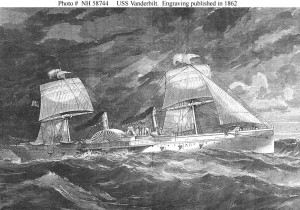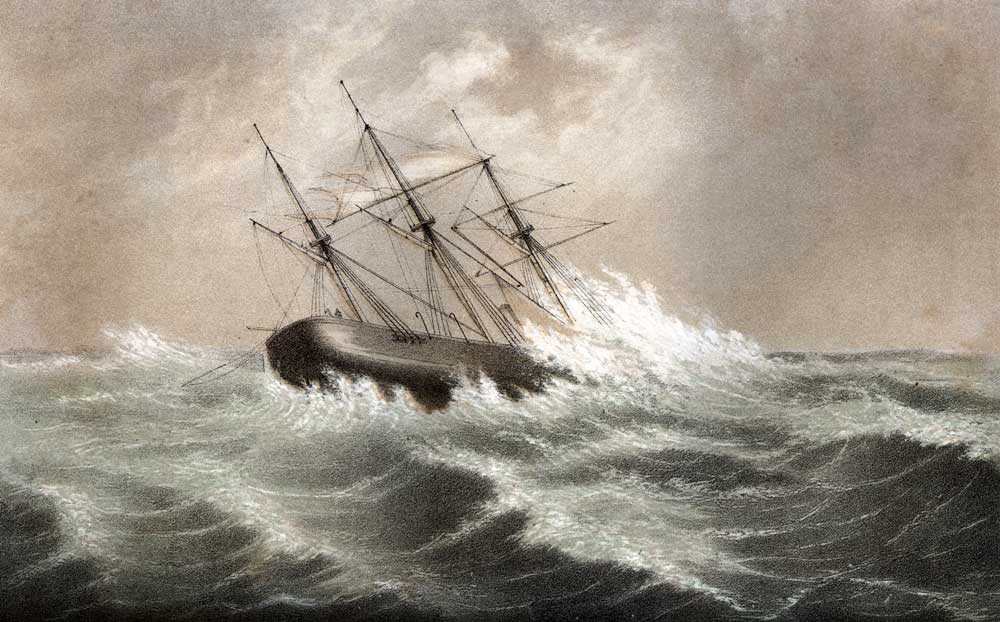From a Seneca County, New York newspaper in November 1862:
Promoted.
William B. Purdy, eldest son of A.S. Purdy, of this village, who enlisted in the Navy, as a marine, from the city of Hartford, Conn., where he has been employed as a book-keeper for the past two o[r] three years, last week received, through his friends in Hartford, from Secretary Welles, a commission as Assistant Paymaster in the Volunteer Navy. This will, no doubt, be pleasing news to “Will.” when he hears of it, he b[e]ing now at sea in The Vanderbilt, hunting the pirate Alabama. We hope he will receive the former and capture the latter, and that, too soon. – Ovid Sentinel.
Hopefully Mr. Purdy was more successful at his new pursuit than the USS Vanderbilt, which
spent the last two months of 1862 and all of 1863 searching in the Atlantic Ocean and West Indies for the Confederate cruiser Alabama. While this extended cruise did not produce an encounter with the elusive enemy warship, Vanderbilt did capture three merchant ships suspected of blockade running or other traffic with the enemy, including steamer Peterhoff in February 1863; steamer Gertrude in April; and bark Saxon in October 1863.
The October 20, 1862 issue of the Richmond Daily Dispatch published a good deal of information about the CSS Alabama and its captain, Raphael Semmes, “… sports a huge moustache the ends of which are waxed in a manner to throw that of Victor Emanuel entirely in the shade, and it is evident that it occupies much of his attention.” You can see the waxed moustache (page ii) and read a good account of the Alabama and Semmes in an online pamphlet at The Navy Department Library. Perhaps the biggest threat to the ship as of 150 years ago today was a cyclone the Alabama endured on October 16, 1862. Semmes wrote about the storm in a book (around page 472 and following) at Project Gutenberg.


